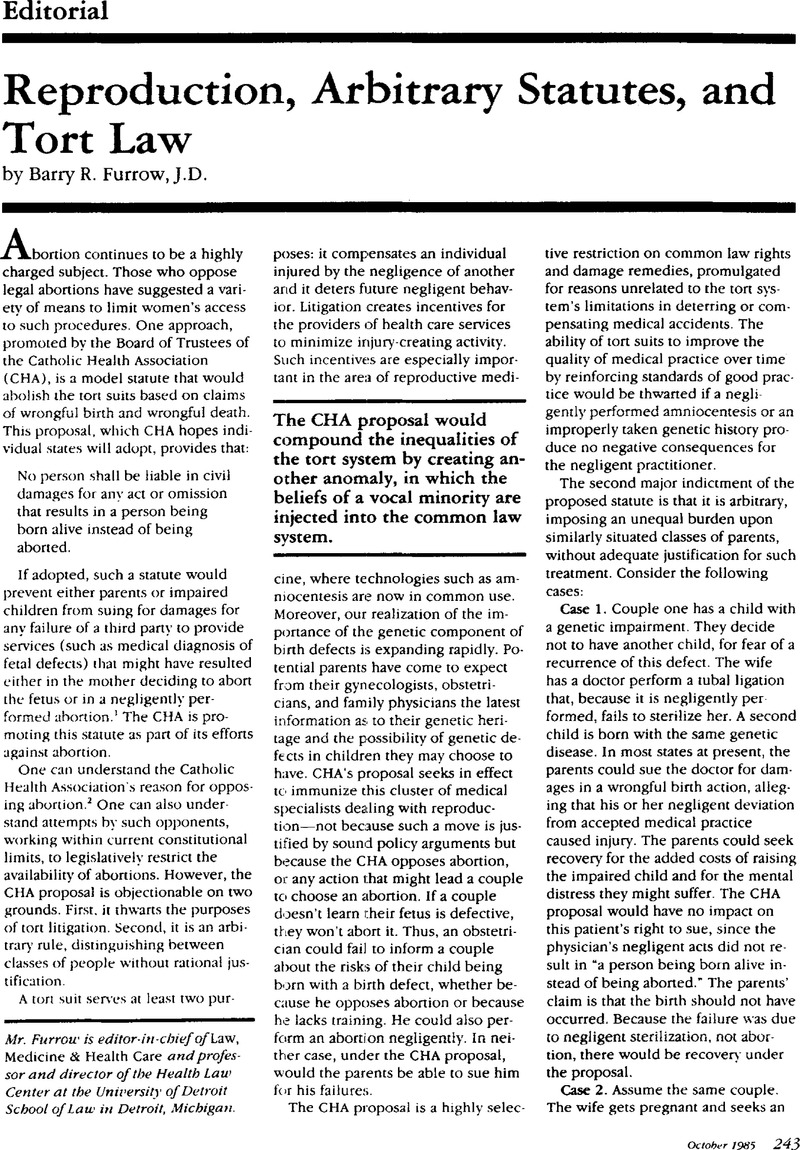This is not an impossible situation. For a case where a similar failure occurred, see
Speck v. Finegold, 408 A.2d 496 (Pa.
1979) (defective infant has no course of action, but parents may sue in their own right for pecuniary expenses of caring for and treating diseased child). Proposal B of the CHA would, if enacted, prevent a child from suing on its own behalf but would not prevent the parents from suing for their own damages.
Google Scholar